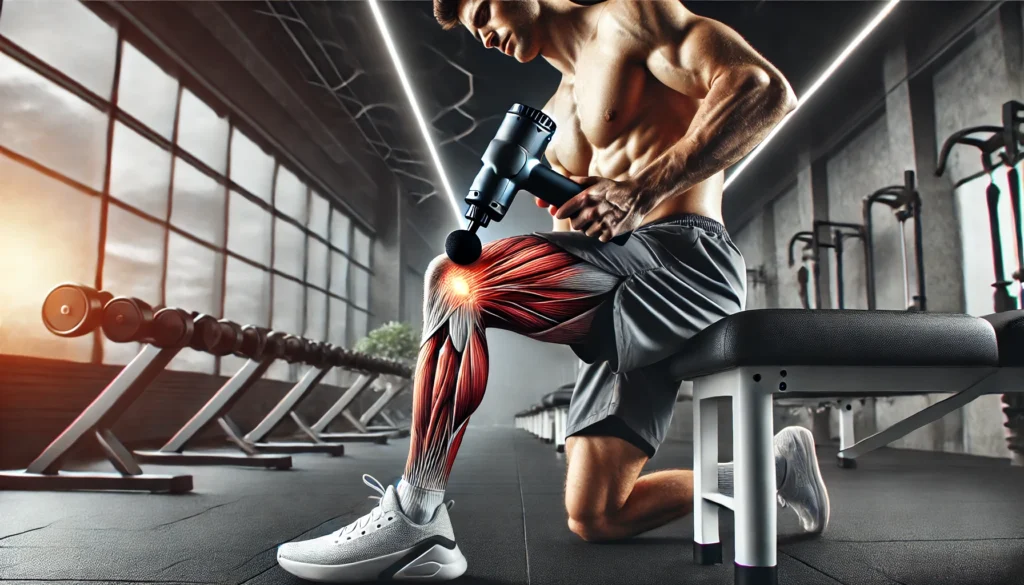Understanding Muscle Strain and Its Recovery Process
Muscle strain, commonly referred to as a pulled muscle, occurs when muscle fibers are overstretched or torn due to excessive force or improper movement. Athletes and individuals engaging in physical activity are particularly prone to muscle strains, often experiencing symptoms such as pain, swelling, reduced mobility, and muscle weakness. Understanding the recovery process is essential for optimizing healing and minimizing downtime.
The body undergoes a natural healing process that involves inflammation, tissue repair, and remodeling. The initial inflammatory phase, typically lasting 24 to 72 hours, is characterized by swelling, redness, and pain as the body works to remove damaged cells. This phase is followed by the proliferative phase, during which new tissue begins to form, and finally, the remodeling phase, where the muscle regains its strength and flexibility. By understanding these stages, individuals can adopt targeted strategies to speed up muscle strain recovery.

Identifying Pulled Muscle Symptoms and Severity
Recognizing the signs of a pulled muscle is crucial for determining the appropriate course of action. Common symptoms include localized pain, tenderness, swelling, and restricted range of motion. In mild cases, discomfort may be minimal and subside within a few days, whereas severe strains can result in significant functional impairment and prolonged recovery periods.
Muscle strains are typically classified into three grades. Grade I strains involve minimal muscle fiber damage, with mild discomfort and no significant loss of function. Grade II strains indicate partial muscle fiber tearing, accompanied by moderate pain and swelling. Grade III strains are the most severe, involving complete muscle rupture, intense pain, and an inability to use the affected muscle. Identifying the severity of a muscle strain helps in implementing the most effective treatment strategies for a timely recovery.

Immediate Steps to Take for a Pulled Muscle
Prompt intervention is essential for reducing pain and preventing further damage. The R.I.C.E. method—Rest, Ice, Compression, and Elevation—serves as the foundation for initial treatment. Resting the affected muscle prevents additional strain, while applying ice reduces inflammation and numbs pain. Compression with a bandage minimizes swelling, and elevation encourages fluid drainage to alleviate swelling.
Pain management may involve over-the-counter nonsteroidal anti-inflammatory drugs (NSAIDs) such as ibuprofen, which help reduce inflammation and discomfort. However, excessive reliance on NSAIDs should be avoided, as they may interfere with the body’s natural healing process. Hydration and proper nutrition further support early recovery by ensuring adequate blood flow and nutrient supply to the damaged tissue.

Should You Stretch a Pulled Muscle? The Role of Flexibility in Recovery
A common concern during recovery is whether stretching benefits or hinders healing. Stretching too soon can exacerbate damage, delaying recovery, while appropriate stretching at the right stage can aid in muscle rehabilitation. Initially, stretching should be avoided, particularly during the acute inflammatory phase, as the muscle is fragile and prone to further injury.
As healing progresses, gentle stretching can gradually be incorporated to restore flexibility and prevent stiffness. Static stretching, involving slow and controlled movements, is generally preferred over dynamic stretching, which requires rapid muscle contractions that may strain recovering tissue. Consulting a physical therapist or medical professional can help determine the appropriate timing and type of stretching for optimal recovery.
Nutrition for Muscle Healing: Essential Nutrients and Dietary Strategies
Diet plays a critical role in muscle strain recovery, as proper nutrition provides the building blocks necessary for tissue repair. Protein is essential for muscle regeneration, as it supplies amino acids that support new muscle fiber formation. Lean meats, fish, dairy, eggs, and plant-based proteins such as lentils and tofu contribute to muscle repair and recovery.
In addition to protein, other nutrients play vital roles in the healing process. Omega-3 fatty acids, found in fish and flaxseeds, have anti-inflammatory properties that help reduce swelling and accelerate recovery. Vitamins C and E act as antioxidants, protecting muscle cells from oxidative damage. Zinc and magnesium contribute to tissue repair and muscle function, making nuts, seeds, and leafy greens valuable additions to a recovery-focused diet. Hydration is equally important, as adequate fluid intake supports circulation and nutrient transport to the injured muscle.
Muscle Tear Recovery Time: What to Expect
Recovery time varies depending on the severity of the muscle strain. Mild strains (Grade I) may heal within one to two weeks with proper rest and care. Moderate strains (Grade II) typically require three to six weeks for full recovery, while severe strains (Grade III) may take several months and sometimes necessitate surgical intervention.
Factors such as age, overall health, and adherence to rehabilitation protocols influence recovery duration. Athletes and physically active individuals should resist the temptation to rush back into training prematurely, as doing so increases the risk of re-injury. Monitoring progress and gradually reintroducing activity ensures a smoother return to full strength.
Rehabilitation Exercises for Strengthening and Preventing Future Injury
Once initial pain and inflammation subside, incorporating rehabilitation exercises can enhance recovery and prevent future muscle strains. Low-impact activities such as swimming and cycling help maintain cardiovascular fitness without placing excessive strain on healing muscles. Resistance training using light weights or resistance bands promotes muscle strengthening and flexibility.
Isometric exercises, which involve contracting muscles without movement, can be introduced early in the recovery process to maintain muscle engagement. As healing progresses, eccentric exercises—where the muscle lengthens under tension—aid in rebuilding strength and resilience. A gradual progression in exercise intensity, guided by a physical therapist or trainer, ensures a safe return to full activity.
Sleep and Recovery: Maximizing Healing Through Restorative Rest
Sleep is often overlooked as a key component of muscle recovery. During deep sleep, the body releases growth hormone, which stimulates tissue repair and muscle regeneration. Poor sleep quality or insufficient rest can prolong healing and increase the risk of recurrent injury.
Establishing a consistent sleep schedule, creating a conducive sleep environment, and practicing relaxation techniques such as meditation or deep breathing can enhance sleep quality. Avoiding stimulants like caffeine before bedtime and ensuring adequate sleep duration—typically seven to nine hours per night—optimizes muscle recovery and overall well-being.
Frequently Asked Questions (FAQ) on Muscle Strain Recovery
How can I speed up muscle strain recovery?
Speeding up muscle strain recovery requires a combination of rest, targeted therapy, and proper nutrition. Applying ice within the first 48 hours reduces inflammation, followed by heat therapy to improve circulation and promote healing. Proper hydration and a diet rich in proteins, omega-3 fatty acids, and vitamins like C and D accelerate tissue repair. Low-impact activities, such as swimming or light yoga, improve blood flow without straining the muscle. Additionally, techniques like massage therapy and electrical stimulation can further enhance recovery speed.
How long does a pulled muscle take to heal?
The healing time for a pulled muscle varies based on the severity of the strain. Mild strains may heal in a few days, whereas moderate strains can take two to three weeks. Severe muscle tears might require months of rehabilitation and, in some cases, surgical intervention. Factors such as age, overall health, and adherence to a rehabilitation program impact recovery time. To avoid setbacks, it’s crucial to gradually reintroduce activity and avoid pushing through pain.
What are the common symptoms of a pulled muscle?
Pulled muscle symptoms include sudden sharp pain, swelling, bruising, and muscle weakness. In more severe cases, individuals may experience difficulty moving the affected area or a noticeable indentation where the muscle fibers have torn. Persistent discomfort when stretching or contracting the muscle is another indication. If symptoms worsen instead of improving, it may be a sign of a torn muscle rather than a simple strain. Seeking medical attention is necessary if there is extreme pain or a complete inability to use the muscle.
How long does it take for a strained muscle to heal fully?
Muscle strain recovery time depends on factors such as the injury’s location, severity, and the treatment protocol followed. Minor strains generally heal within one to two weeks, while more significant injuries can take four to six weeks. Severe muscle tears may require three months or more to regain full function. Regular rehabilitation exercises and lifestyle adjustments, such as proper posture and ergonomic changes, help prevent reinjury. Engaging in progressive strength training ensures the muscle regains its full capacity over time.
Should you stretch a pulled muscle?
Stretching a pulled muscle too soon can worsen the injury and delay healing. In the early stages of recovery, it’s best to focus on rest, ice therapy, and gentle movement rather than aggressive stretching. Once the inflammation subsides, controlled stretching can help restore flexibility and prevent stiffness. Dynamic stretches are more beneficial than static ones when reintroducing movement. Always listen to your body—if stretching causes pain, it’s a sign that the muscle isn’t ready.
How can you tell if you tore a muscle instead of just straining it?
Signs of a torn muscle include severe pain, a popping sensation at the time of injury, and visible bruising. Unlike a mild strain, where movement is possible with some discomfort, a complete tear results in a significant loss of function. In some cases, a muscle tear creates a visible deformity, such as a dent or bulge where the muscle has retracted. Muscle tear healing time is considerably longer than a minor strain and often requires physical therapy or surgery. Seeking professional evaluation is essential if these symptoms appear.
What are the best ways to heal a pulled muscle fast?
To heal a pulled muscle fast, it’s critical to follow the R.I.C.E. method (Rest, Ice, Compression, Elevation) in the initial phase. Consuming anti-inflammatory foods, staying hydrated, and incorporating light movement can accelerate healing. Supplementing with collagen, magnesium, and B vitamins further supports tissue repair. Advanced recovery methods like cryotherapy, hydrotherapy, and acupuncture can also enhance recovery rates. Monitoring pain levels and adjusting activities accordingly prevents setbacks and promotes long-term healing.
What is the muscle strain recovery timeline?
The muscle strain recovery timeline follows distinct stages. The first phase (acute phase) lasts up to 72 hours and involves pain, swelling, and initial inflammation. The subacute phase, lasting one to three weeks, includes tissue repair and gradual restoration of function. The final phase, which may extend several weeks, focuses on strengthening and regaining full mobility. Muscle tear healing may take longer, requiring customized rehabilitation programs. Understanding this timeline helps in setting realistic recovery expectations.
How does muscle tear recovery differ from a standard strain?
Muscle tear recovery is more complex than a standard strain due to the extent of tissue damage. While minor strains heal with conservative treatment, a torn muscle often necessitates immobilization or surgical intervention. The rehabilitation process includes targeted physical therapy, focusing on strengthening surrounding muscles to compensate for lost function. Torn muscle recovery time varies widely, ranging from a few weeks for minor tears to several months for complete ruptures. Proper rehabilitation and adherence to medical guidance ensure a successful return to activity.
How can I prevent future muscle strains?
Preventing muscle strains requires a proactive approach that includes strength training, flexibility exercises, and proper warm-ups. Incorporating resistance training helps build resilience, while dynamic stretching prepares muscles for activity. Maintaining hydration and electrolyte balance reduces the likelihood of cramps and muscle fatigue. Ergonomic adjustments in daily activities, such as correct lifting techniques and posture correction, further lower strain risks. Listening to your body and allowing adequate rest between intense workouts is key to long-term injury prevention.
Conclusion: Accelerating Muscle Strain Recovery for Optimal Performance
Recovering from a muscle strain requires a multifaceted approach that encompasses proper rest, nutrition, rehabilitation, and lifestyle adjustments. Understanding how long a pulled muscle takes to heal allows individuals to set realistic expectations and implement evidence-based strategies for faster recovery. By addressing pulled muscle symptoms early and following a structured recovery plan, individuals can regain strength and function efficiently. Prioritizing proactive measures such as gradual stretching, progressive strengthening exercises, and adequate sleep fosters long-term muscle health and minimizes the risk of future injuries. Embracing a comprehensive recovery strategy ensures not only a quicker return to activity but also enhanced resilience and performance in the long run.
muscle strain recovery, pulled muscle healing, muscle tear recovery, how to heal a muscle strain fast, how to recover from muscle strain quickly, muscle strain recovery time, torn muscle recovery, pulled muscle symptoms, best ways to recover from a muscle tear, effective muscle recovery strategies
Further Reading:
10 tips to make your muscle strain recovery move faster
Best ways to recover from a muscle strain
Muscle Strain: Causes, Symptoms, Treatment
The information contained in this article is provided for general informational purposes only and is not intended to serve as medical, legal, or professional advice. While NewsHealthWatch strives to present accurate, up-to-date, and reliable content, no warranty or guarantee, expressed or implied, is made regarding the completeness, accuracy, or adequacy of the information provided. Readers are strongly advised to seek the guidance of a qualified healthcare provider or other relevant professionals before acting on any information contained in this article. NewsHealthWatch, its authors, editors, and contributors expressly disclaim any liability for any damages, losses, or consequences arising directly or indirectly from the use, interpretation, or reliance on any information presented herein. The views and opinions expressed in this article are those of the author(s) and do not necessarily reflect the official policies or positions of NewsHealthWatch.

